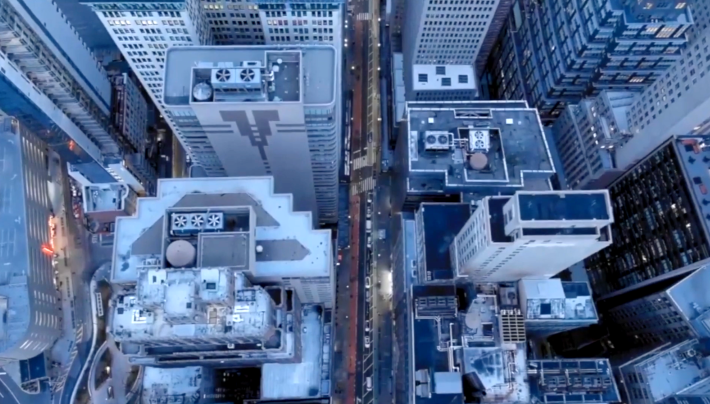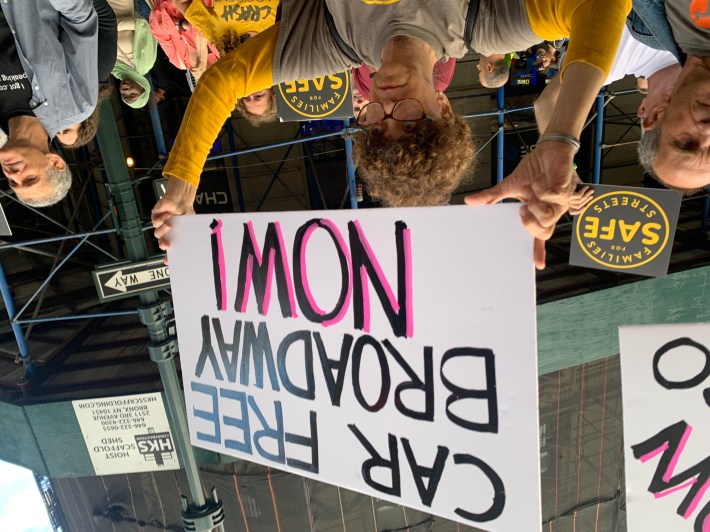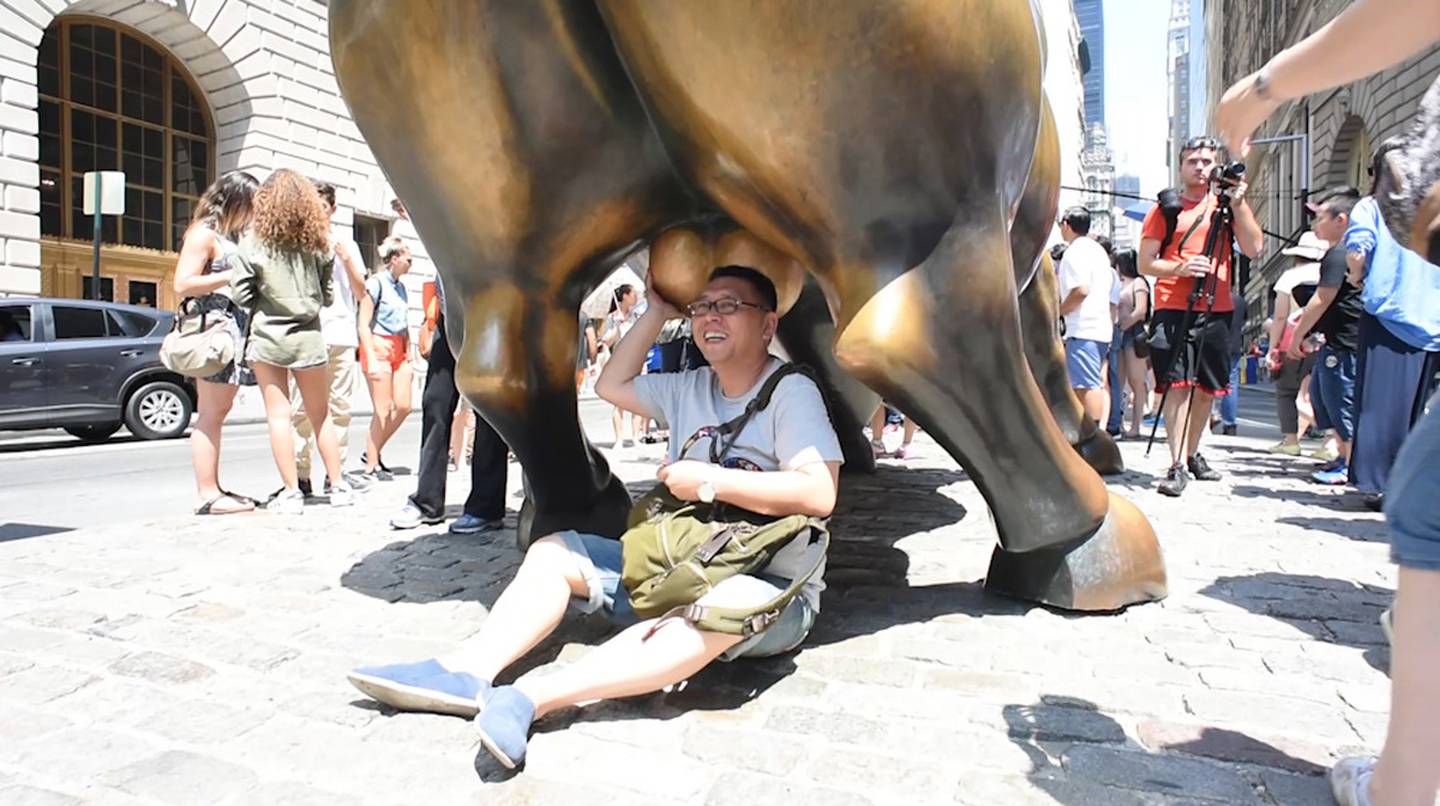When it comes to "get stuff done," this is the low-hanging fruit.
A Lower Manhattan civic association wants the city to make the southern terminus of Broadway car-free on summer Sundays — when hardly any motorists use that stretch of the road anyway.
Arthur Piccolo, the chairman of the Bowling Green Association, circulated a letter to city officials on June 17, proposing that the city close Broadway to vehicles from Liberty Street to Bowling Green on Sundays starting on July 3 through the end of the summer. Receiving no reply, Picolo sent the same entreaty to several top Department of Transportation officials, including Commissioner Ydanis Rodriguez, Chief Strategy Officer Julie Bero, Chief of Staff Madeline Ehrlich, and Assistant Commissioner for Policy William Carry. (The area in question is on both sides of the red pin in the map below.)
Piccolo demonstrated that a Financial District closure would be easy to accomplish by including in his message an arial video taken on Sunday, June 12: It shows a street devoid of car traffic, which Piccolo said was typical of Sunday afternoons. The area empties out every weekend, when the Stock Exchange closes — but especially lacks vehicle traffic in the warm months, when many brokers take helicopters to their second homes in the Hamptons. The automotive quiet "creates the perfect opportunity for the administration to prove its commitment to pedestrians," he told Streetsblog.
Piccolo said that the area's many attractions, including the Charging Bull statue, Trinity Church (resting place of Alexander Hamilton), and Battery Park would draw even more walkers and bikers than they do now on Sundays if Broadway went car-free, becoming a destination for the whole city. Indeed, his proposal is what even traffic engineers might call a no brainer.

But Piccolo, who recalled that Mayor Adams had visited his downtown group four times for ceremonial flag-raisings since taking office in January, hadn't received even a cursory response to his emails until Streetsblog asked the DOT and the Mayor's Office for a response on Thursday. Piccolo called that "arrogant."
In the meantime, a horrendous crash further up on Broadway has thrown the issue of pedestrian safety on the boulevard into sharp relief.
"This should have happened long ago — but in the past, we have not had a mayor like Eric Adams who thrives on challenging the stays quo and conventional thinking, and who truly listens to real New Yorkers, and who truly listens to real New Yorkers who come to him and his Transportation Commissioner Rodriguez with proposals like this," Piccolo intoned in his video message, invoking the can-do spirit of the supposed "Get Stuff Done" Mayor.
He certainly is right about the "long ago" part.
The pedestrianization of the Great White Way exploded as an issue for the city on June 20, when a taxi driver jumped a Broadway curb at 29th Street in the Flatiron district, hitting several people and critically injuring three of them. One woman lost a leg. The crash prompted urgent calls from activists and business leaders for more pedestrian safety, to which the city responded by accelerating its long-delayed "Broadway Vision" plan for traffic calming of the stretch of Broadway in question. The city envisions a "pedestrian-friendly" corridor from Columbus Circle to Union Square.
The moves have not quelled the calls of activists for making the iconic boulevard "people-centered" in its entirety, however. "Ban the damn cars," tweeted one last week.

What is this rubbish. Broadway is superfluous, even counterproductive, to motor vehicle traffic flow (to the extent one might be inclined to care about that). Ban the damn cars.
— Militant Pedestrian (parody) @ SFBA dot social (@transbay) June 29, 2022
Planners and safe-streets activists long have eyed Broadway for pedestrianization from Columbia University in Morningside Heights to at least Houston Street, for a variety of reasons. The road (a former Native American foot path) cuts a narrow path through the city’s street grid; car drivers find its twisting course vexing and confusing even as the traffic they make plagues bus riders and kills and maims pedestrians and cyclists.
The car-choked stretches of the boulevard also have proved poisonous for businesses, with many vacant storefronts along them even before the pandemic. In contrast, the shared-street spaces and pedestrian plazas that the DOT has established along Broadway during the past two decades — including at Times Square, Herald Square, Madison Square and Union Square — have emerged as some of the most popular city destinations, whetting the appetite of businesses, residents and tourists for more such car-free venues.
SIDEBAR: CITY SHOWS LACK OF 'URGENCY' ON OTHER FIDI SAFETY INITIATIVES
FiDi residents and some prominent architects, meanwhile, have pushed for years for pedestrianization of the area below Chambers Street from Broadway to the East River, where many people walk or bike to work and the narrow, colonial-era streets were paved long before the advent of the automobile. The Bloomberg administration planned a number of shared streets in the district, but the pedestrianization drive there slowed under Mayor de Blasio, as it did further up Broadway. Right now, all that's shared is the strip of Broadway east of the Charging Bull. That puts us way behind European (and even some American) cities, many of which have pedestrianized their "old towns."
According to DOT spokesman Vincent Barone, the city is "reviewing" the Bowling Green Association's proposal "as we continue our Broadway Vision plan to pedestrianize much of Broadway year-around, from Union Square to Columbus Circle." Barone added: "We invite organizations like this to apply to our growing Open Streets program.”
Picolo said, "I'm not going through their process. That's bureaucratic nonsense. Either is a good idea or it's not," echoing an often-heard criticism of the DOT's Open Streets program — that it's too dependent on the efforts of volunteers for tasks that must be a city focus.
The Mayor's Office declined comment, referring questions to the DOT.






